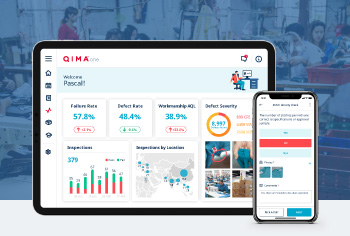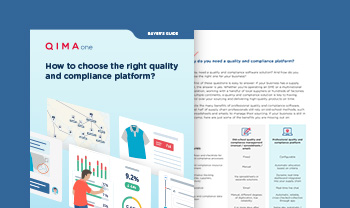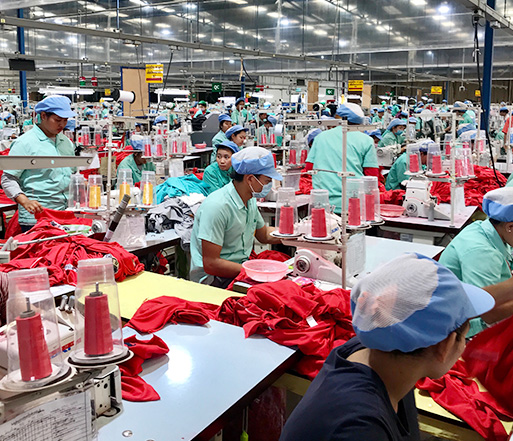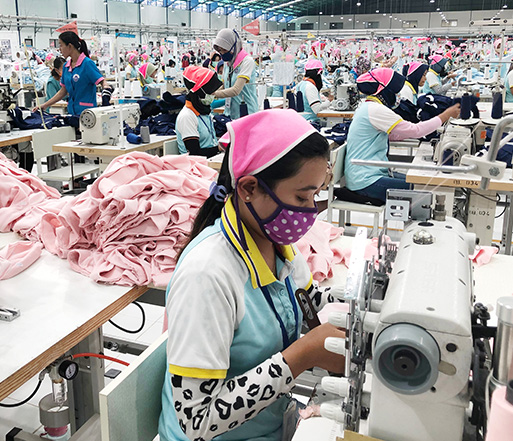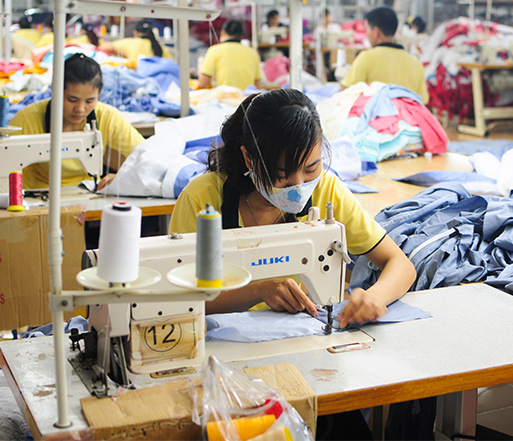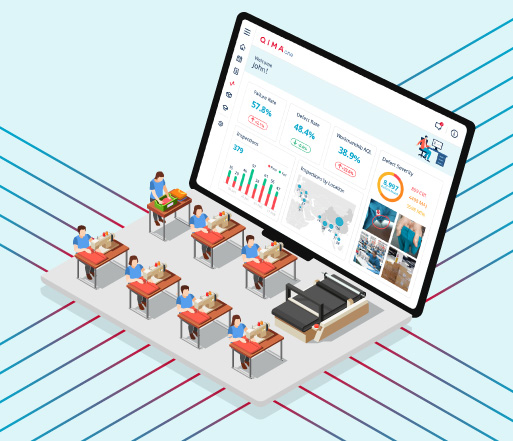
Article
Challenges & Solutions for Supply Chain Visibility

Article
Challenges & Solutions for Supply Chain Visibility
Article
Challenges & Solutions for Supply Chain Visibility

随时了解最新的供应链信息。
To a business, unresolved supply chain visibility challenges are much what driving through fog is to a driver: both difficult and dangerous.
Why is addressing the challenges of supply chain visibility so vital for businesses?
Because navigating a business and ensuring product quality at every turn requires full knowledge of your supply chain, and every blind spot in your sourcing is a potential disaster.
In this article, we will look at why supply chain visibility is crucial for businesses, how businesses can tackle supply chain visibility challenges, and how achieving visibility ensures efficiency, high-quality production, and ethical transparency.
How Important is Supply Chain Visibility for Business Operations?
For companies depending on outside sources for raw materials, manufacturing (assembly, processing, finishing, etc.) and large-scale shipping, it is important to know, as a minimum:
- where and how their raw materials are being sourced;
- whether their suppliers meet all relevant manufacturing specifications;
- whether their contracted factories are operating efficiently or wastefully;
- the status of health and safety standards at all supply chain locations;
- whether all supply partners have current and appropriate certification documents; and
- how finished products are being tested, packaged, labeled, and shipped.
Staying on top of these factors requires an ongoing flow of information about each individual process, updated In addition to helping you overcome general supply chain visibility challenges In addition to helping you overcome general supply chain visibility challenges time. Periodic updates--monthly, weekly, even daily--may come too late for effective action.
What cannot be measured cannot be managed. In turn, a business cannot address issues it simply doesn’t see. In order to achieve quality, efficiency, and sustainability in your sourcing operations, your business needs to have a 360 degree view of its supply chain, and real-time information on its day-to-day performance.
What are the Challenges (and Solutions) to Achieving Supply Chain Visibility?
While the size of a business and its product portfolio are usually directly proportionate to the scale of the supply chain, today’s global sourcing environment means that even small businesses can have suppliers on the other side of the globe. As a result, businesses of all sizes have to deal with the challenges of supply chains stretched across borders and continents: from communication and logistics to cultural, linguistic, and regulatory differences.
Furthermore, while supplychaindive.com indicates that "the larger the company, the more opaque operations tend to be throughout the supply chain," running a small or medium business does not automatically guarantee you supply chain visibility. In fact, while SMEs will have vastly smaller supply chains compared to multinationals, they will also lack the resources to adequately investigate and map them.
The bottom line is, companies of all sizes struggle with a host of supply chain visibility challenges, such as:
- Disparate management systems and siloed teams
- Lack of real-time data on supply chain operations
- Poor communication between supply chain stakeholders
- Unauthorized subcontracting and/or raw material sourcing
What do the above issues mean to the everyday operation of your business? Each and every one of them is a compounding factor in multiple aspects of your supply chain management, including such fundamental tasks as maintaining consistent product quality, ensuring regulatory compliance and building an ethical supply chain.
How is Technology Meeting the Challenges of Supply Chain Visibility?
Collaboration and technology are key in breaking silos and gaining more visibility. Fortunately, modern-day quality management software is designed to enable collection and real-time sharing of quality and compliance data across even the most complex of supply chains.
Here are some of the key ways in which professional quality control and compliance software helps businesses achieve supply chain visibility:
- Supply chain mapping -- Having a 360-degree view of your supply chain means that you know the names and locations of all of your suppliers, from your direct vendors to subcontractors, raw material suppliers and mills.
- Data collection and sharing in real time -- all data points captured manually during factory inspections or audits, as well as all automatically collected data, are stored, consolidated, and made available to relevant stakeholders for informed decision-making.
- Data analysis -- collecting data is only one part of the equation. In order to give you a real picture of your supply chain, raw data must be organized, analyzed, and presented in an easy-to-understand (ideally, visualized) way. Professional QC and compliance platforms offer customizable dashboards with views, reports and KPIs that translate your supply chain data into actionable insights.
- Real-time alerts -- If your quality team wants to keep track of quality control procedures as they happen, they can receive progress alerts during inspections, with localization and timestamps. Alerts can also be used for upcoming scheduling reminders, or be triggered by certain KPIs values or flags (such as supplier performance below a certain level, or a claim rate that may suggest inspector integrity issues).
Testing, Inspection, and Certification (TIC) Assistance
In addition to helping you overcome general supply chain visibility challenges, professional quality control and compliance software solutions can assist your business with specific aspects of supply chain management, such as:
- Quality Control (QC) Inspection Monitoring -- Smart platforms provide real-time inspection monitoring so that responsible managers can follow an ongoing product inspection from any location. This can be very valuable for high-priority and time-sensitive orders, because monitoring in real time means that your quality team can communicate in real time about any quality and compliance issues, and address them immediately, without the need to wait for the completed inspection report.
- Product Traceability – A shared, easy-to-use platform can make a product’s entire journey, from sourcing point to shelf or table, visible and transparent for you, your stakeholders and your customers.
- Certification Verification -- With shared data across the supply chain, all relevant factory certifications, either successfully obtained or still outstanding, can be made available to all business partners for review.
- Factory Audits / Ethical Audits – The power of professional quality control and compliance software does not stop at inspections. Its real-time communication, data collection and analysis, and supply chain mapping capabilities can be effectively leveraged by factory auditors and CSR teams to collect and report data on such concerns as worker safety, environmental protection, fair trade standards, and more, helping you ensure ethical and sustainable sourcing in your supply chain.
- Integrated Learning Management Software-- Top-of-the-line quality and compliance platforms offer information and education resources that you can use to train all of your supply chain stakeholders on your product specifications and ethical standards. From proper QC procedures for inspectors (i.e. artwork checks, battery tests, carton drop tests) to health and safety protocols (signage requirements, emergency procedures, general sanitary standards) and more, integrated learning management will enable you to drive lasting improvement throughout your supply chain, across continents, cultures and languages.
In addition to ensuring better quality control and compliance in your supply chain, training offers the additional benefit of instilling trust and confidence in your suppliers. By offering training programs and support to your supplier teams, you make it clear that you value your business partnership with them, and are interested in long-term cooperation. When your suppliers and vendors have trust and confidence in you as a client, they are much more likely to invest time, effort and resources in improving their production and ethical practices.
How Can QIMAone Help?
QIMAone offers professional quality control and compliance software that has the power to dramatically improve your supply chain visibility, while ensuring consistent product quality and streamlining your QC and compliance operations.
QIMAone features include:
- Instant data collection and analysis;
- Supply chain mapping and supplier performance scoring;
- Streamlined real-time communication across the supply chain;
- Automated in-house and third-party assessment scheduling;
- Real-time alerts for QC issues;
- A library of customizable inspection checklists designed by industry professionals, and more.
Additionally, through the QIMA Academy platform, you can train your suppliers, inspectors and auditors on industry standards and best practices – wherever they are located and whichever language they speak.
Finally, you can benefit from the powerful features of QIMAone without the need to scrap your current software or overhaul your entire sourcing system. QIMAone can be seamlessly integrated into your current systems, and start working for you right away.
Want to see QIMAone in action? Learn more by scheduling a demo today.
